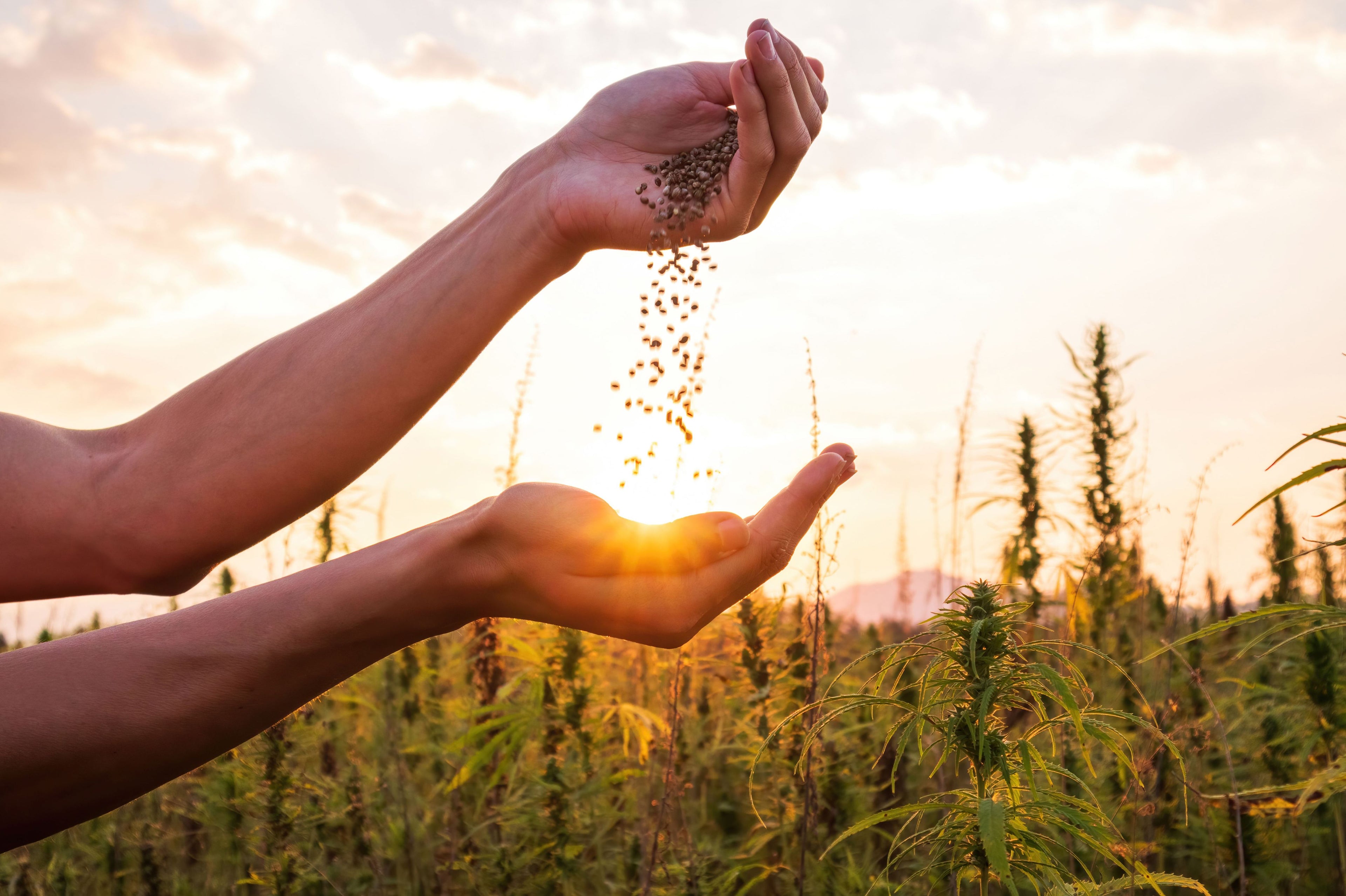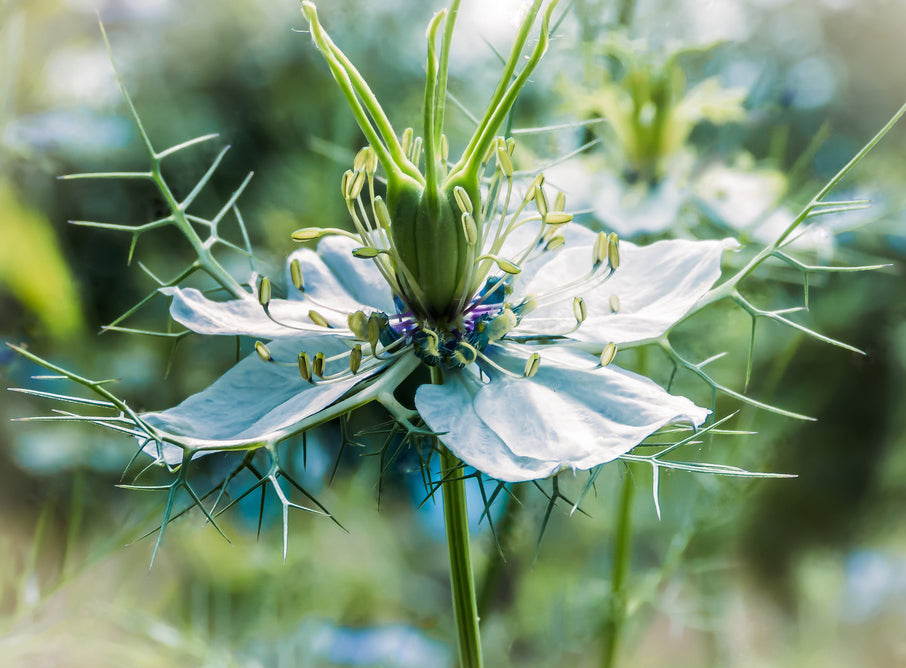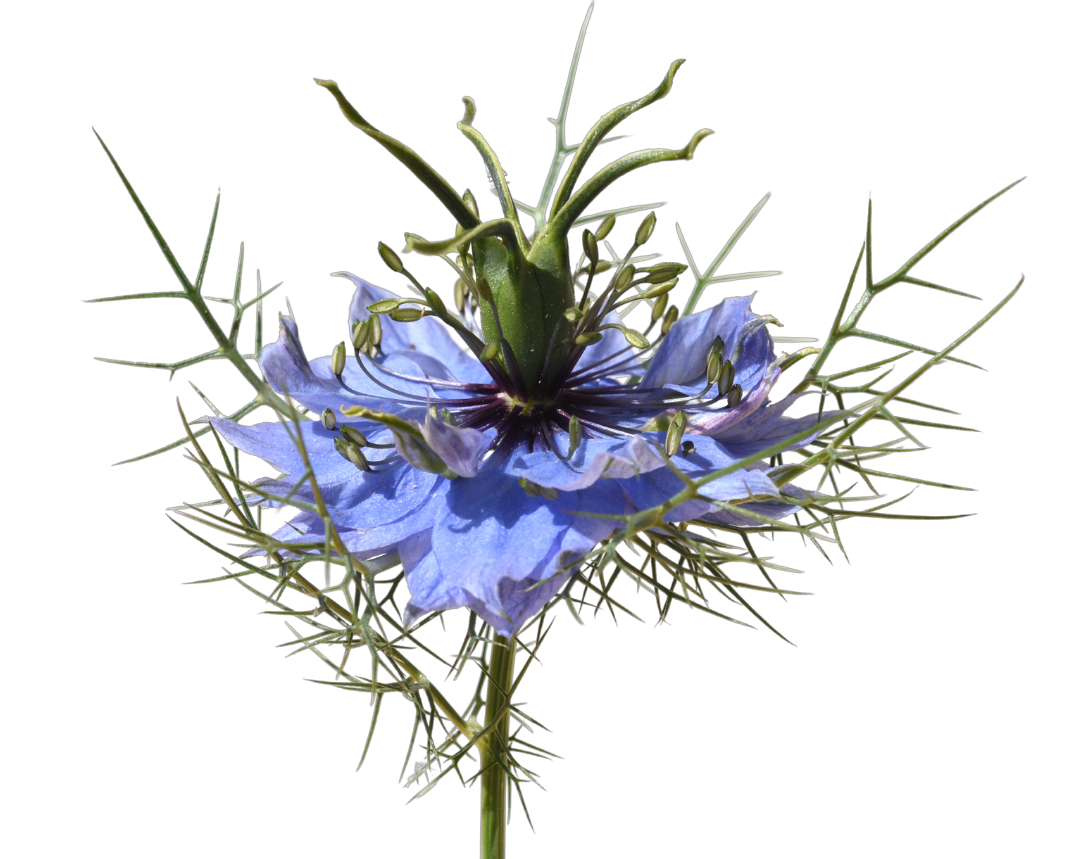
Botanical nature
Nigella sativa belongs to the phylum Spermatophytes, subphyla Angiosperms, class Dicotyledons, subclass Magnoliidae, order Ranunculales, family Ranunculaceae and genus Nigella.
The Ranunculaceae family is an ancient family of plants bringing together around 2000 distinct species, one of which has proven to be of therapeutic interest with high potential: Nigella Sativa.
This annual herbaceous plant has some unique characteristics: basal and stem leaves called 'multifid', that is to say divided into numerous short strips. The regular star flowers have a particularity: their showy and colored parts are made up of sepals and the petals which contain the nectar have the shape of small, much shorter potbellied cones. The stamens are numerous, inserted in a spiral and surround five long pistils.
Nigella is white, light blue, dark blue or even purple depending on the species.
The capsule-shaped fruit contains triangular-shaped seeds that blacken in the air. It can reach up to 60 cm in height.
Seed maturation begins in June for a harvest from August to September.
It is mainly cultivated in the Mediterranean regions (Maghreb, Turkey and Syria), in Western Asia up to Pakistan and India, passing through Saudi Arabia, Sudan and Ethiopia.
Nigella sativa is distinguished from Nigella de Damascus, found in gardens, by the absence of multifid leaves gathered in involucre immediately around the flower and then the fruit.

History and traditional use
Fossils from the beginning of the Cretaceous (-250 million years ago) prove the existence of nigella at the end of the secondary era. Its therapeutic and condimentary virtues have been known since Antiquity. Its first traditional use was discovered in the ancient Mesopotamian Sumerian city of Nippur, where it was carved on a clay tablet estimated to be over 5,000 years old.
It was also very popular in ancient Egypt, where it was initially used as a medicinal plant for coughs and lung diseases, but also as a cosmetic for the skin. In fact, its properties were exploited by queens Cleopatra and Nefertiti thanks to the papyrus writings written at that time. Archaeologists also discovered vials of black cumin oil in the tomb of Pharaoh Tutankhamun.
In the 1st century, Dioscorides, a Greek doctor, cited the uses of nigella: it was used to treat headaches, nasal congestion, toothache and fight against intestinal worms. It was also used as a diuretic and promoted menstruation and the flow of milk. In
Greco-Roman medicine, we also find Hippocrates and Galen, who mentions nigella as effective against ulcers and various pains, against pulmonary diseases and as a solution to promote digestion.
It is one of the plants whose cultivation is recommended in the royal domains by Charlemagne in the capitulary of Villis.
Until the 16th century, in Europe, its very fragrant seeds were frequently used in cooking for their spicy taste as a substitute for pepper.
In the Orient, it is often used in the preparation of breads or cakes in the form of seeds.
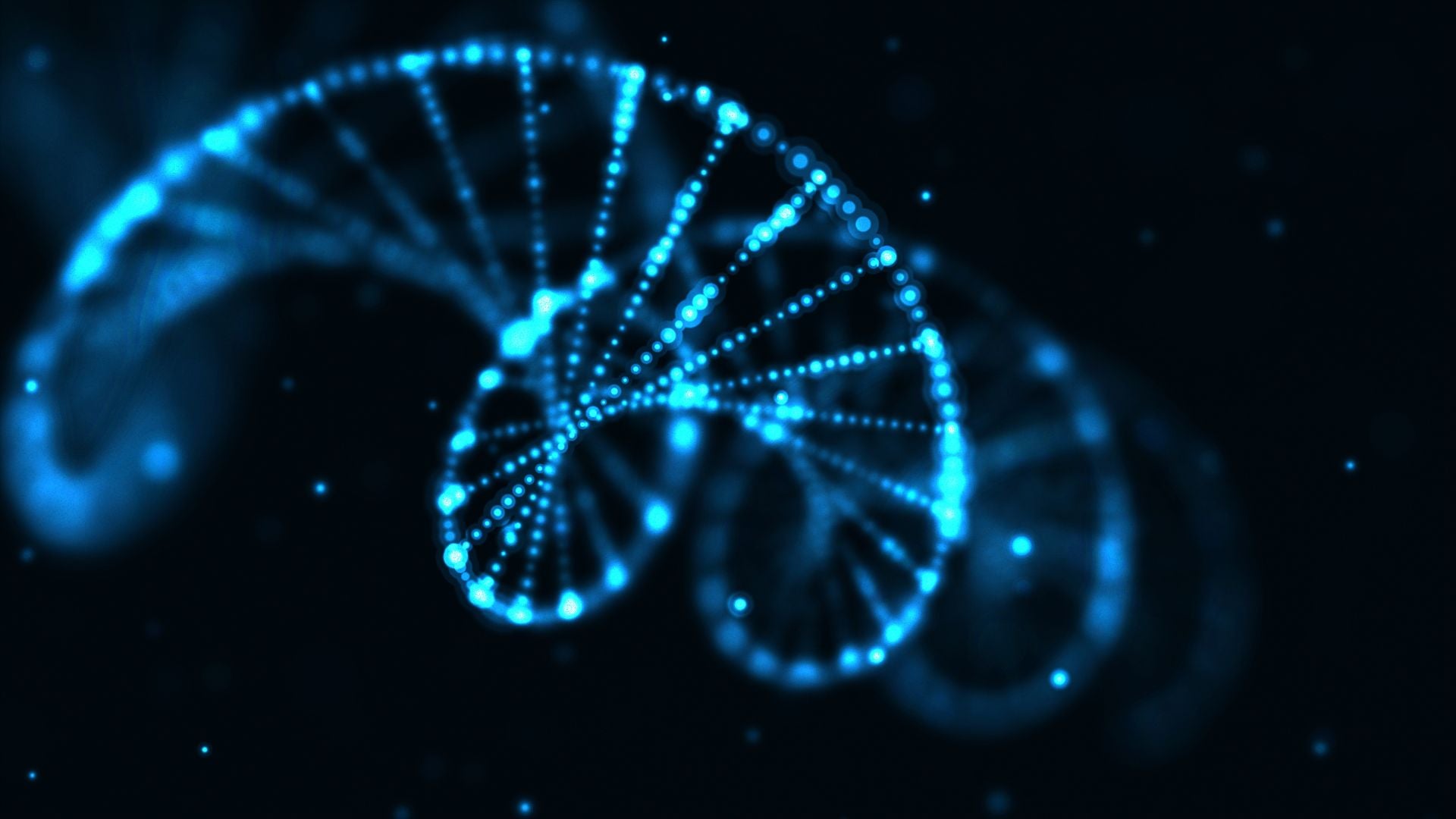
Chemical composition
The seed produces a fixed oil, by cold pressing or other innovative techniques. The oil content is 35.6% to 41.6%.
The fatty acid composition is fairly homogeneous. These are mainly polyunsaturated (55-60%: majority linoleic acid) and monounsaturated (20-25%: majority oleic acid) fatty acids. The proportion of saturated fatty acids is 15-20% (mainly palmitic and stearic acids).
The unsaponifiable fraction of the fixed black seed oil consists mainly of sterols (around 2.9 g/kg on average) with mainly the following usual compounds: β-sitosterol (around 50%), stigmasterol, campesterol.
Minority sterols are present (Δ5-avenasterol, Δ7-stigmasterol, Δ7-avenasterol).
The unsaponifiable also contains vitamin E, carotenoids, nigellone, and traces of alkaloids. We also find constituents of essential oil (EO), the content of which is subject to the conditions of production and conservation, in addition to the variability of the plant material (for the record, the constituents of EO have by definition a volatile nature. ). We find in particular Thymoquinone (TQ), the majority bioactive which will interest us more particularly. This is unfortunately only very weakly quantified in the Nigella oils present today on the food supplement and cosmetics market with very variable contents ranging from 0.07% to 1.88%.
The seed contains alkaloids in small quantities including Nigellicimine, Nigellimine, Nigellimine N-oxide, Nigellidin and nigellione and Flavonoids including quercetin and kaempferol. Several pentacyclic triterpene genin saponosides are present, including α-hederin.
The biological activities of nigella are not linked to these less abundant compounds, however their contribution to the antimicrobial activities of seed extracts is however mentioned.
Finally, we find proteins of the order of 16 to 19%, insoluble fibers of 5.5 to 8.9%, and minerals mainly: Calcium, Copper, Potassium, Zinc and Phosphorus.
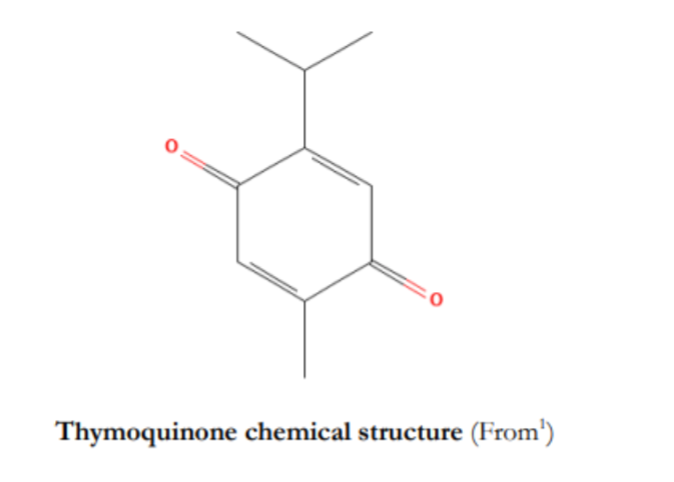
Thymoquinone
Thymoquinone (name IUPAC36) is the main active ingredient in the seeds.
It is a compound from the monoterpene group, belonging to the benzoquinone class. It is not widespread in life. It is mainly found in the seeds of Nigella Sativa.
It is the most powerful active ingredient studied clinically since 1975 and to date has numerous beneficial effects for human health: antioxidants, anti-inflammatory, immunomodulatory, neuroprotective, antiallergic, anti-hepatotoxic and antidiabetic, analgesic, antiproliferative and antibacterial.
To date, the Thymoquinone content does not exceed 3% in the formulations of food supplements and cosmetics, and therefore even less in seeds on the supplementation market.
The challenge of developing formulas rich in Thymoquinone is therefore the mission that Officine du Monde has given itself in a challenge of effectiveness, traceability and quality Nigella.


